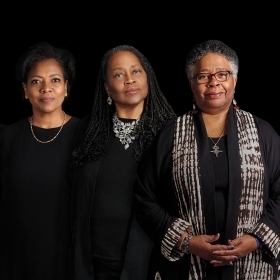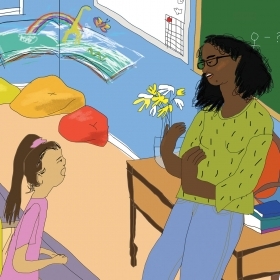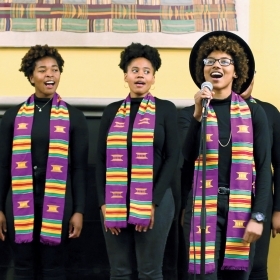We were at a reunion (25th? 40th?) when the most-anticipated part of the alumnae parade—a procession of antique cars—appeared. Inside, the oldest alumnae smiled and waved as they were chauffeured through the deep double lines of later classes who were lustily cheering them on. Classmate Callie Crossley squeezed my arm in excitement: “I can’t wait till we get to do that!”
I can wait. The years seem to be moving by quickly enough as it is.
It really doesn’t feel like more than 50 years since we first arrived on campus. At the time, the class of ’73 was the largest class Wellesley had ever admitted—which was par for the late ’60s. A particularly large bulge of baby boomers was moving through the country’s population python (remember that from sociology?) and our sheer numbers changed institutions everywhere, including—maybe especially—colleges. Our first year, an inordinate number of us were assigned to Freeman, Bates, and McAfee. Barely a decade old then, the New Dorms also got another designation from derisive upperclassmen: the Baby Dorms. We all adjusted to each other.
Something else that required adjustment: Before the class of ’73, there were just a few Black girls per class, but ’73 had more Black students than the previous three classes combined. We were a mixed bag: girls from private day schools and boarding school, but also girls from huge, competitive public-school campuses and girls from the suburbs. Many evenings, Harambee House was our sanctuary and the Ethos Choir our joy, cherished respites from what would now be called microaggressions. Back then, some white students and administrators implied, some said outright, that we were at Wellesley because … you know. Later, the roster of Black doctors, lawyers, professors, and corporate executives would prove that being, you know, was not a detriment, but what M.B.A.s call value-added.
Life changed quickly; after the anti-war moratorium in the spring of ’70, the old norms collapsed. The student body joined a national student protest to strike against the ever-escalating war in Vietnam. In one fell swoop, institutions like Wait-On (where freshmen set the dinner tables, passed platters, and cleaned up after our upperclass betters) were abolished So were parietals—the rules that demanded we be back in our dorms by 10 p.m. every weeknight, 1 a.m. on weekends. There was also the demand that we dress for Sunday luncheon and Tuesday dinner (times when we were encouraged to invite faculty). All those things evaporated by the fall of 1970.
Some traditions hung on until they, too, became Wellesley history. For a long time, there was still tea every week. (Although whoever had tea duty for dorm work no longer had to wear a skirt.) We had the luxury of coming to breakfast in our pajamas, because each dorm had its own dining room. And Bells told us whether we had visitors (women) or callers (men). That arcana became something with which to regale the current classes: “You had to wait on upperclassmen? Seriously?” Yep.
So a lot has changed in 50 years. But as I discovered this spring, some things are immutable: the ocean of rippling grasses in the field below the New Dorms and the Science Complex. Light sparkling off the lake. The long swoop of Severance Green. The canopy of trees in the Academic Quad—kaleidoscopic with changing leaves in the fall, frosted with snow a few months later, swathed in spring’s hazy new greenery. The friendships we made at Wellesley and carried through the years. Those friendships are renewed and refreshed with every reunion. This year was no exception.
Perhaps more than at previous gatherings, it was obvious that time is hurtling on. Our “In Memoriam” list is getting longer. Some of us flagged down golf-cart rides to accommodate new hips or knees. We laughingly compared medical notes at meals. And we’re coming closer to being seated in those gorgeous antique cars. We’re not there yet—but we are moving farther and farther back in the line. Next reunion, I’m pretty sure things will look the same: The younger classes will sashay forth, laughing, cheering, wearing insignia in their class colors. The weather will probably be glorious. So yes, in five years, I plan to come back if I can. As the song says: Only to be there.
Karen Grigsby Bates ’73 is a recovering journalist in Los Angeles. She’s working on a novel about Black Wellesley alumnae and their student experiences.








We ask that those who engage in Wellesley magazine's online community act with honesty, integrity, and respect. (Remember the honor code, alums?) We reserve the right to remove comments by impersonators or comments that are not civil and relevant to the subject at hand. By posting here, you are permitting Wellesley magazine to edit and republish your comment in all media. Please remember that all posts are public.